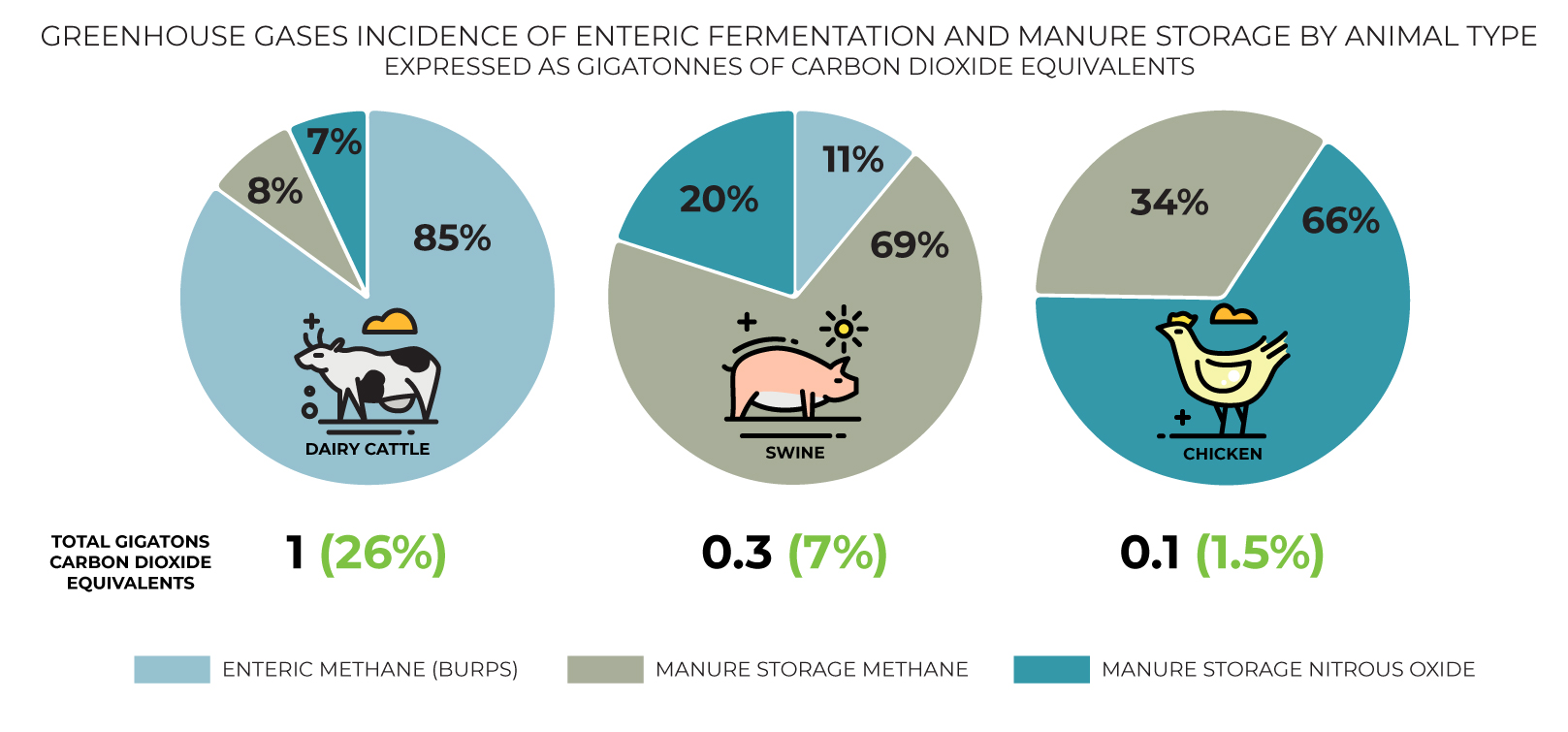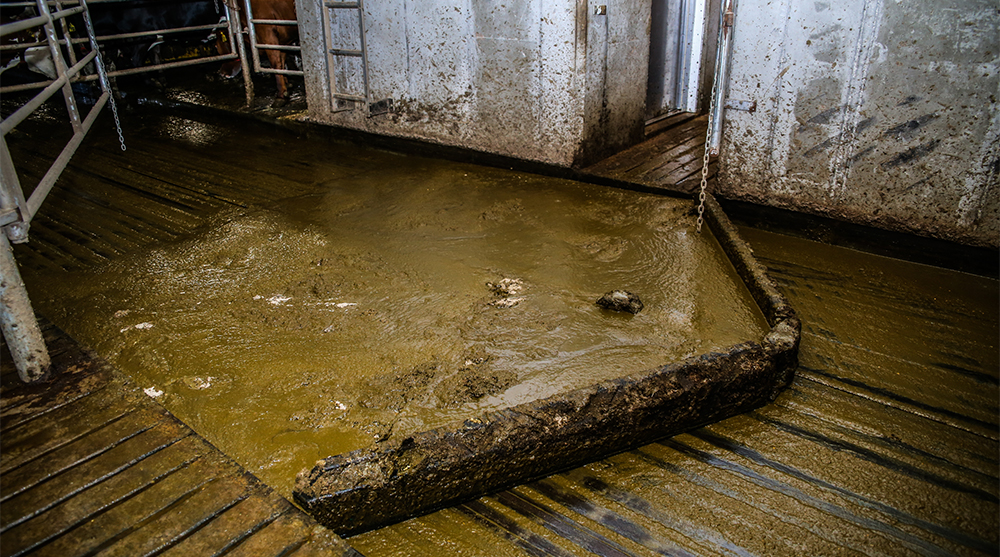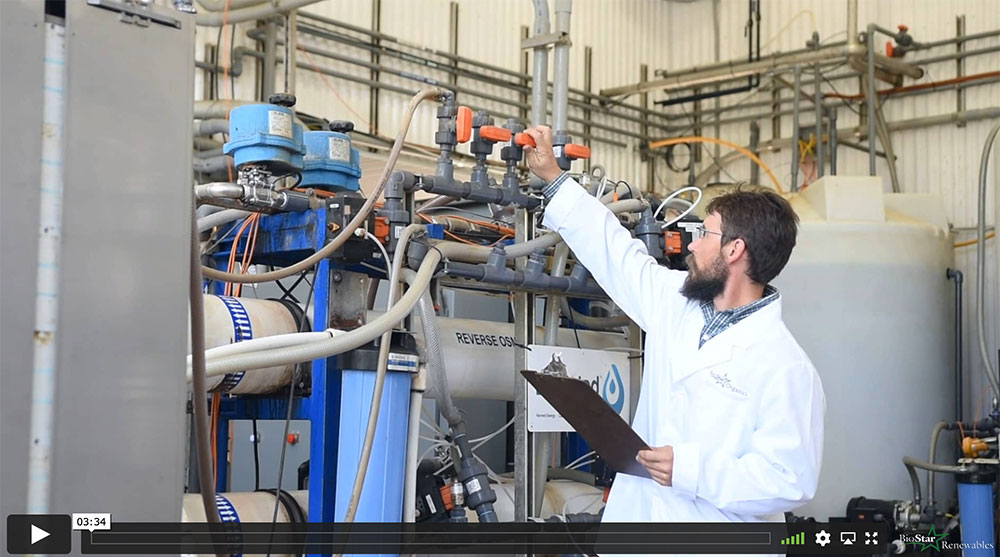BioStar partners with animal feeding operations to turn
manure into renewable energy and organic fertilizer.
THE PROBLEM
Global population has increased by 4+ billion people in the last 50-years, creating record demand for low-cost animal protein. (400% increase in demand) Animal Feeding Operations have helped reduce world hunger by more than 25%, increasing global protein supply by 300%, and reducing the average household spend on food by 32% in the last half-century. In 2018, animal feeding operations produced nearly 340 million tons of animal-based protein.
So, what’s the problem? With all that protein, comes a lot of waste. One animal feeding operation can easily produce 1+ million tons of manure / year. According to the Food & Agriculture Organization, livestock and animal related operations not only demand significant natural resources, but account for around 14.5% of total anthropogenic greenhouse gas emissions per year. (7.1 Gigatonnes of carbon dioxide equivalents for the year 2005.)

WHY IT'S IMPORTANT
Livestock operations are increasingly important as our world population continues to grow, but significant mitigation efforts are needed to curb the organic waste generated by these operations. Animal agriculture operations generally produce concentrated amounts of methane CH4 and nitrous oxide. Methane, which is emitted via manure storage, has a global warming potential (GWP) that is 28 times greater than carbon dioxide.
The Environmental Protection Agency (EPA) found that since 1990, ag-related emissions have increased by:


Data referred to 2010 (FAO, 2017).
PITFALLS OF LAND-APPLIED MANURE
Many farmers and animal feeding operations land-apply their manure, which isn’t particularly efficient and has limited benefits including:
- Substantial loss of nitrogen within a few days
- Odors
- Nitrate and phosphorus runoff into surface waterways and groundwater
- Too much manure and not enough land
OUR SOLUTION
BioStar partners with animal feeding operations to process their manure waste via anaerobic digestion, creating renewable energy either in the form of biogas or electricity. Your manure waste is our feedstock! A partnership with BioStar will eliminate manure handling costs and return clean water to your operation for reuse.
We use anaerobic digestion and our patented nutrient recovery technology to create:
Biogas (Renewable Natural Gas)
Compostable
Fiber
Clean Water for Industrial Use
Renewable Electricity
SuperSix™ Organic Liquid Fertilizer
WE ACCEPT FARM WASTE FROM
CHICKENS

COWS

SWINE
OUR PROCESS
MAJESTIC CROSSING DAIRY
Sheboygan Falls, WI
BioStar partnered with Majestic Crossings Dairy in Sheboygan Falls, WI to successfully run a solid-liquid separation system that produces the same centrifuge system to remove the fiber, separate the suspended solids and reverse osmosis, which separates the dissolved solids. BioStar’s patented process produces the secret sauce, SuperSix™ Organic Liquid Fertilizer. During the final evaporation step, the system removes water and concentrates the Nitrogen, resulting in the final product.
INCENTIVES & DRIVERS OF MARKET GROWTH
There are currently proposed, and already in place Federal regulations governing animal feeding operations including:
BioStar and our partners expect more regulation of this industry in the future, including the potential for mandatory covering of wastewater lagoons on animal feeding operations.

ACHIEVE YOUR ESG GOALS

- Prevent Greenhouse Gas Emissions from manure and lagoons
- Create Renewable Natural Gas & Renewable Electricity
- Eliminate Manure Handling Costs, which can have a substantial carbon footprint in themselves
- Create clean recycled water for reuse





